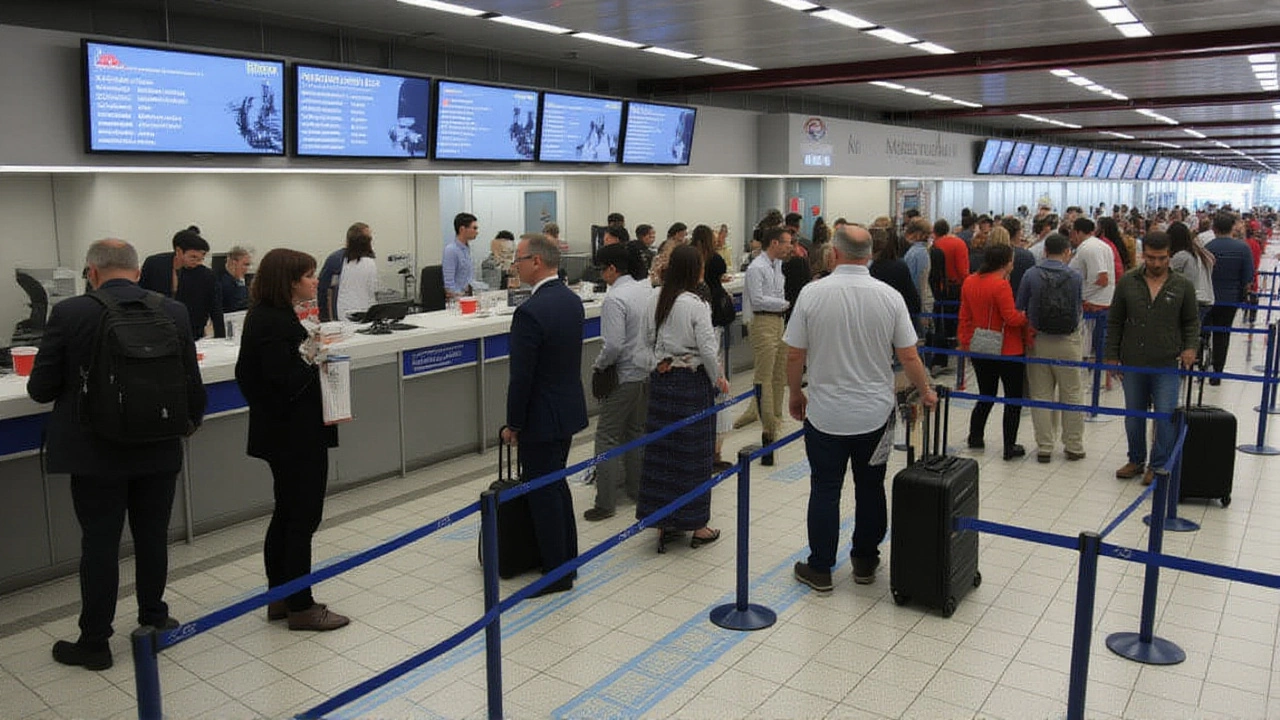The US doubles its ESTA fee to $40 and adds new EVUS and land I‑94 charges, impacting 40 million yearly visitors and reshaping travel‑authorization costs.
When navigating United States travel policy, the official framework that decides who can enter, how long they can stay, and what activities are allowed while in the country. Also known as U.S. travel regulations, it shapes everything from tourism to business trips and even study exchanges. This policy guides the entire visitor experience by setting rules on documentation, security checks, and health standards. In practice, the policy includes Visa requirements, the specific documents and eligibility criteria foreign nationals must meet, relies on the ESTA, an electronic authorization system for visa‑waiver travelers, and adapts to Travel advisories, government alerts that influence entry conditions based on safety or health concerns. Understanding how these pieces fit together helps you avoid surprises at the border.
First, Visa requirements, cover categories such as tourist, business, student, and work visas, each with its own processing time, fee, and documentation list. The United States travel policy defines which category applies to your purpose, which in turn determines whether you need to apply at a U.S. embassy or can use an online system. For example, a B‑2 tourist visa typically requires proof of ties to your home country, a travel itinerary, and a financial statement. If you’re a student, the F‑1 visa demands an I‑20 form from an accredited school and evidence of tuition payment. These nuances are why the policy requires travelers to match their intent with the correct visa class.
Second, the ESTA, is the electronic travel authorization for citizens of Visa Waiver Program countries that want to stay 90 days or less. The United States travel policy uses ESTA as a fast‑track screening tool, checking security data before you board a flight. An approved ESTA is valid for two years or until your passport expires, whichever comes first, and costs a modest fee. However, the policy specifies that certain criminal records or prior immigration violations can still block entry, even with a valid ESTA. In short, ESTA streamlines the entry process, but it doesn’t override the broader security rules embedded in the policy.
Third, Travel advisories, are issued by the Department of State and can raise, lower, or lift travel restrictions based on safety, health, or diplomatic issues. When a region receives a Level 4 advisory, the United States travel policy may suspend visa processing for that area or impose extra screening at the border. Conversely, a Level 1 advisory signals normal conditions, allowing the standard visa or ESTA procedures to continue. This dynamic relationship means the policy adjusts in real time to global events, such as pandemics, natural disasters, or political unrest.
Finally, Border security, includes customs inspections, biometric checks, and interdiction of prohibited goods—all enforced under the umbrella of United States travel policy. Modern border security uses databases linked to visa and ESTA records, enabling officers to flag high‑risk travelers instantly. The policy also mandates health screenings, like COVID‑19 vaccination proof, when public health emergencies arise. This layer of security ensures that the policy not only controls who enters but also protects the country’s public safety once they’re inside.
Putting it all together, the United States travel policy encompasses visa requirements, ESTA authorizations, travel advisories, and border security measures. Each element influences the others: a new advisory can tighten visa rules, an updated ESTA system can speed up border checks, and stronger security protocols can shape future policy revisions. By recognizing these connections, you can plan your trip with confidence, know which documents to secure, and stay ahead of any changes that might affect your itinerary.
Below you’ll find a curated collection of articles that dive deeper into each of these topics—real‑world examples, recent updates, and practical tips to help you navigate the ever‑changing landscape of U.S. travel regulations. Whether you’re applying for a visa, checking your ESTA status, or monitoring travel advisories, this resource hub aims to keep you informed and ready for your next journey.

The US doubles its ESTA fee to $40 and adds new EVUS and land I‑94 charges, impacting 40 million yearly visitors and reshaping travel‑authorization costs.